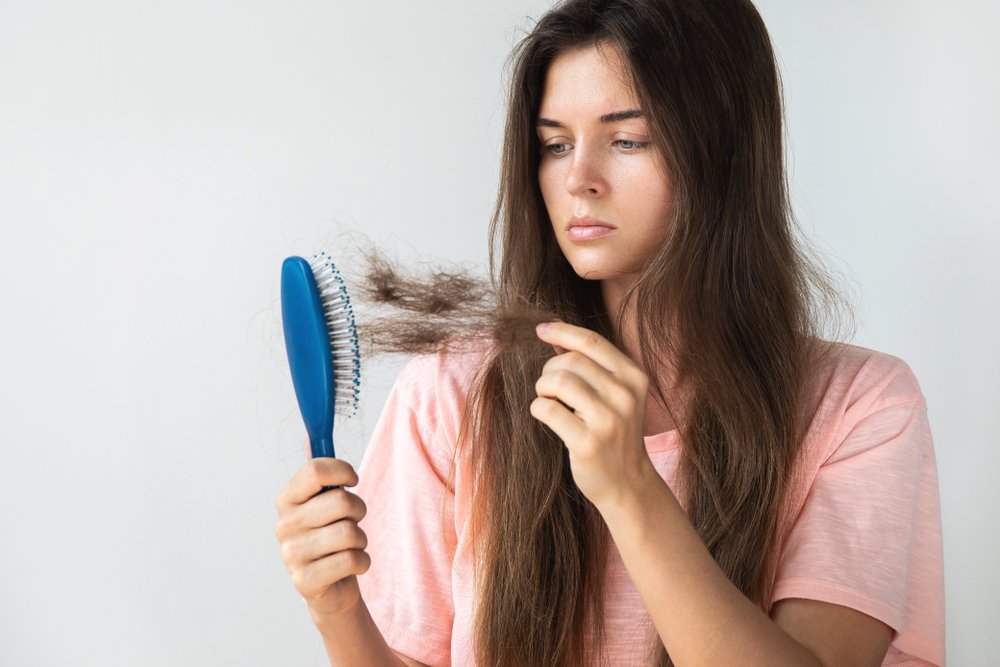Meet Our Doctor

Dr. Neha Rajesh Rathi
Consultant Dermatologist & Cosmetologist

Education:
- MBBS – Pravara Medical College, Loni, Maharashtra, December 2009
- DVD – Dermatology, D Y Patil Medical College and Research Centre, Nerul, Navi Mumbai, July 2012, under the guidance of Dr. Nitin Nadkarni and Dr. Sharmila Patil.
- Fellow of Dermato Surgery under Dr. Sanjeev Handa
Hair Loss Treatment In Chhindwara

Best Hair Loss Treatment Specialist Doctor In Chhindwara
If you’re looking for a hair loss treatment specialist in Jabalpur, there are experienced dermatologists and clinics that specialize in hair restoration and hair-related concerns. Below are some of the top hair loss treatment specialists in Chhindwara:
Apex Clinic,Chhindwara
Specialization: Apex Clinic offers a comprehensive range of treatments for both skin and hair, with a strong focus on hair loss and restoration.
Services Offered:
PRP therapy to promote natural hair growth.
Consultation & treatments for hair thinning, baldness, and alopecia.
Scalp treatments for dandruff, dryness, and other scalp issues.
Non-surgical hair restoration techniques.
Why Choose: Apex Clinic uses advanced technology and provides tailored hair loss solutions for long-term results.
Hair Loss Treatment Specialist Doctor Near Me In Chhindwara
To find a hair loss treatment specialist near Apex Clinic, you can use local directories such as Google Maps. These platforms allow you to search for dermatologists or trichologists (specialists in hair loss) based on your location and provide reviews, contact details, and appointment options. If you specifically want someone who offers treatments like PRP (Platelet-Rich Plasma) therapy, hair transplants, or medical treatments for alopecia, you can filter your search accordingly.
Dr. Neha Rathi (Dermatologist)
Specialization: Dr. Neha Rathi is known for her expertise in treating hair loss, including male and female pattern baldness, alopecia areata, and other scalp-related issues.
Services Offered:
PRP (Platelet-Rich Plasma) therapy for hair restoration.
Hair thinning treatments, scalp care, and dandruff management.
Medications like Minoxidil for promoting hair growth.
Hair transplant consultation and treatments.
Why Choose: Dr. Rathi combines advanced dermatological knowledge with a personalized treatment approach to address hair loss.
Hair Loss Treatment in Chhindwara
Hair loss treatments vary depending on the underlying cause and the type of treatment preferred by the patient. Here are some common options available for treating hair loss:
1. Medications
Minoxidil: An FDA-approved topical treatment for both men and women that stimulates hair follicles, often available as a foam or solution.
Finasteride: An oral medication for men that works by inhibiting hormones linked to hair loss. It requires a prescription and regular follow-up with a doctor.
Dutasteride: Similar to finasteride, often used when finasteride is not effective.
2. Platelet-Rich Plasma (PRP) Therapy
In PRP therapy, a doctor takes a small sample of your blood, processes it to isolate the platelet-rich plasma, and then injects it into your scalp. This plasma is rich in growth factors that can stimulate hair follicles and promote growth.
This treatment is often done in a series of sessions and has shown positive results for many people with androgenic alopecia (pattern hair loss).
3. Low-Level Laser Therapy (LLLT)
This non-invasive treatment uses laser or light therapy to stimulate hair follicles, improving cell function and hair density.
LLLT devices are available in clinics or as at-home devices like laser combs, helmets, or caps.
4. Hair Transplant Surgery
In hair transplant surgery, follicles from the back or sides of the head moved to areas of thinning or baldness.
preferred as it leaves minimal scarring.
Surgery is a more permanent solution but involves a recovery period and may require several sessions for optimal results.
5. Scalp Micropigmentation (SMP)
A non-surgical treatment where tiny pigments are tattooed onto the scalp to mimic the appearance of hair follicles, giving the illusion of thicker hair or a close-shaved look for those with more advanced hair loss.
6. Nutritional and Lifestyle Changes
Diet can impact hair health, so doctors may suggest increasing intake of nutrients like biotin, zinc, iron, and vitamins (especially vitamin D).
Reducing stress through relaxation techniques, as stress is often linked to hair loss.
7. Alternative Treatments
Herbal and Natural Remedies: Essential oils, such as rosemary or peppermint oil, may help promote scalp health and support hair growth.
Microneedling: Small needles are used to create micro-injuries in the scalp, which can stimulate hair follicles and enhance the effectiveness of topical treatments.
Types of Hair Loss
- Androgenic Alopecia:Known as male or female pattern baldness, this genetic condition causes progressive hair thinning and baldness over time.
- Alopecia Areata:An autoimmune disorder leading to sudden, patchy hair loss on the scalp or other areas, like eyebrows and eyelashes. In severe cases, it cause total hair loss or complete body hair loss .
- Telogen Effluvium:Triggered by stress, illness, hormonal changes, this condition causes temporary hair shedding. It often occurs a few months after a triggering event.
- Anagen Effluvium:Often a result of chemotherapy, this type of hair loss affects hair in the growing phase (anagen) and can lead to rapid hair loss.
- Traction Alopecia:Caused by excessive tension from hairstyles, this type of hair loss can be permanent if it persists for extended periods.
Causes of Hair Loss
Genetic Factors (Androgenic Alopecia):
- The most common cause of hair loss, androgenic alopecia, also known as male or female pattern baldness, is influenced by genetics and hormones.
- It typically follows a predictable pattern: a receding hairline and thinning on the crown for men, and general thinning on the top of the scalp for women.
- This condition is progressive, with hair follicles gradually shrinking over time until they can no longer produce visible hair.
Hormonal Changes and Medical Conditions:
- Hormonal imbalances, often due to conditions like polycystic ovary syndrome (PCOS), menopause, or thyroid disorders, can disrupt the hair growth cycle.
- Pregnancy, childbirth, and contraceptive pills can also cause temporary hair loss.
- Autoimmune conditions as alopecia areata, cause the body’s immune system to attack hair follicles, resulting in patchy hair loss.
Nutritional Deficiencies:
- Lacking essential nutrients like iron, zinc, protein, and vitamins D, A, and E can weaken hair structure and lead to hair loss.
Iron deficiency anemia is a well-known cause of diffuse hair shedding, especially in women.
Stress and Psychological Factors:
- Physical or emotional stress can trigger telogen effluvium, where a significant amount of hair enters the resting phase and falls out after a few months.
- Conditions like trichotillomania (hair-pulling disorder) are also linked to psychological factors.
Medications and Treatments:
- Some drugs can cause hair loss as a side effect, including medications for blood pressure, cancer (chemotherapy), arthritis, depression, and heart issues.
- Chemotherapy, in particular, targets rapidly dividing cells, affecting hair follicles and resulting in temporary hair loss.
Infections and Scalp Conditions:
- Infections like ringworm, which is a fungal infection, can lead to scalp scaling, inflammation, and hair loss.
- Chronic scalp conditions, such as seborrheic dermatitis and psoriasis, may also contribute to hair thinning if untreated.
Excessive Hair Styling and Chemical Treatments:
- Frequent use of heat styling tools, dyes, perms, and other chemical treatments can weaken hair, leading to breakage and thinning.
- Traction alopecia occurs when hairstyles (e.g., tight ponytails, braids) cause tension on the scalp, damaging hair follicles over time.
Phases of Hair Growth
Anagen Phase (Growth):
- The active phase where hair grows from the follicles lasts from 2 to 7 years.
- About 85-90% of hair is in this phase at any given time.
Catagen Phase (Transition):The short phase hair stops growing, detaches from the blood supply lasts about 2-3 weeks.
Telogen Phase (Resting):The final phase where the hair rests before shedding and replaced by new growth. This phase lasts around 3-4 months.
Risk Factors for Hair Loss
- Age: Hair loss becomes more weak with age.
- Family History: Genetic predisposition, especially in cases of androgenic alopecia.
- Medical History: Health conditions, medications, and hormonal issues.
- Lifestyle: Poor nutrition, smoking, and extreme stress can all increase the risk.
